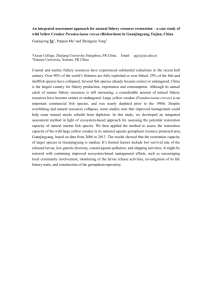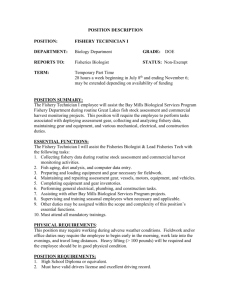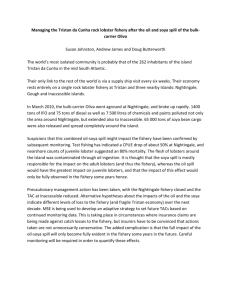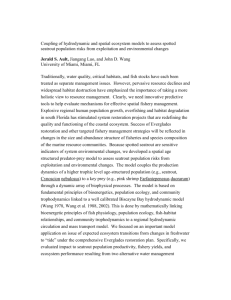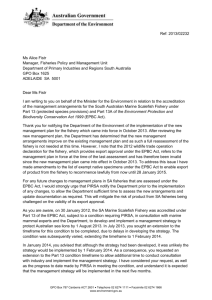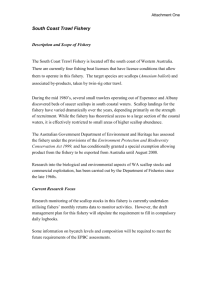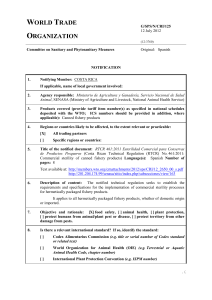10540_Ye-edited
advertisement
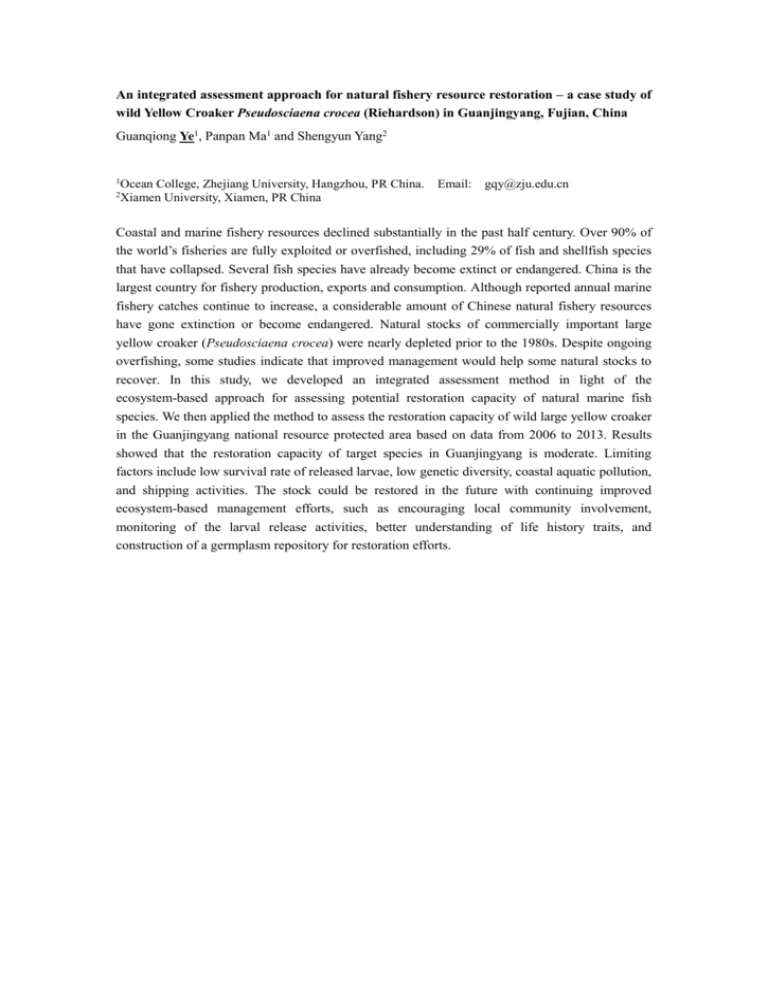
An integrated assessment approach for natural fishery resource restoration – a case study of wild Yellow Croaker Pseudosciaena crocea (Riehardson) in Guanjingyang, Fujian, China Guanqiong Ye1, Panpan Ma1 and Shengyun Yang2 1 2 Ocean College, Zhejiang University, Hangzhou, PR China. Xiamen University, Xiamen, PR China Email: gqy@zju.edu.cn Coastal and marine fishery resources declined substantially in the past half century. Over 90% of the world’s fisheries are fully exploited or overfished, including 29% of fish and shellfish species that have collapsed. Several fish species have already become extinct or endangered. China is the largest country for fishery production, exports and consumption. Although reported annual marine fishery catches continue to increase, a considerable amount of Chinese natural fishery resources have gone extinction or become endangered. Natural stocks of commercially important large yellow croaker (Pseudosciaena crocea) were nearly depleted prior to the 1980s. Despite ongoing overfishing, some studies indicate that improved management would help some natural stocks to recover. In this study, we developed an integrated assessment method in light of the ecosystem-based approach for assessing potential restoration capacity of natural marine fish species. We then applied the method to assess the restoration capacity of wild large yellow croaker in the Guanjingyang national resource protected area based on data from 2006 to 2013. Results showed that the restoration capacity of target species in Guanjingyang is moderate. Limiting factors include low survival rate of released larvae, low genetic diversity, coastal aquatic pollution, and shipping activities. The stock could be restored in the future with continuing improved ecosystem-based management efforts, such as encouraging local community involvement, monitoring of the larval release activities, better understanding of life history traits, and construction of a germplasm repository for restoration efforts.
